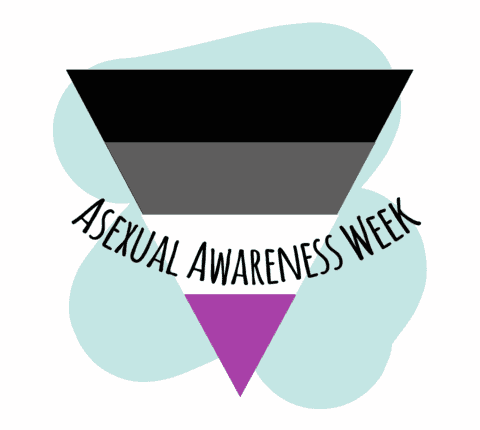Asexuality is a lesser known identity in the LGBTQ community, and the University of Saskatchewan Students’ Union Pride Centre is working to build awareness about this identity and challenge misconceptions.
To do this, the USSU Pride Centre hosted Asexual Awareness Week from Oct. 24-28, an event that included a screening of the documentary (A)sexual at OUTSaskatoon on Oct. 24 and an asexual panel on Oct. 27, in which panelists discussed their experiences of identifying as asexual. On Oct. 28, there was a wrap up party, which also took place at OUTSaskatoon.
At the asexual panel, Kenny Starling, a second-year sociology student and co-ordinator of the Pride Centre, outlined the different identities on the asexual spectrum.
“An asexual is someone who does not experience sexual attraction at all. This does not include libido because anyone can have a libido — that’s just your sex drive.  Sexual attraction is actually where that libido is directed towards,” Starling said.
Sexual attraction is actually where that libido is directed towards,” Starling said.
The asexual spectrum also includes demisexual, when a person does not experience sexual attraction until they have formed a bond with someone, and greysexual, when a person only sometimes feels sexual attraction towards others.
Starling also spoke about the difference between asexuality and aromanticism.
“Aromanticism is when someone experiences no romantic attraction. This does not mean that they can’t be in a relationship; it just means that they don’t experience feelings of attraction,” Starling said.
Many people have a hard time understanding asexuality, and it can also be difficult to come to terms with being an asexual person, as the panelists described. Ashley Clouthier, a fifth-year English and history student spoke about her experience.
“I think the fact that I’ve never felt sexual attraction to women particularly made me feel as though I was just heterosexual and a lot of that I think was socialization,” Clouthier said.
As well as heteronormative socialization, Clouthier described what it feels like to identify as asexual in a very sexual society.
“We live in a very hypersexualized culture and I think that’s what contributes to the misunderstanding of asexuality — the fact that there’s so much focus on sex. Everything’s about sex,” Clouthier said.
April Nechvateo, an outreach and support co-ordinator at OUTSaskatoon, thinks that the belief that asexuality does not exist or is a phase is one of the most common misconceptions when it comes to asexuality.
“My biggest pet peeve is people trivializing it or not thinking it’s real. I get that a lot,” Nechvateo said.
Starling also shared that, although many misunderstandings about asexuality exist, there are many positive parts of identifying as asexual.
“My life is not completely about sex. I have a lot of sexual friends who tell me about their sexual activities and it feels to me, from the outside looking in, like that’s all they think about … I feel like it takes over their lives,” Starling said.
Nechvateo also sees positive aspects despite all of the negative misconceptions.
“I like not having to worry about STIs or getting pregnant … it’s a lot more stress-free for me,” Nechvateo said.
Starling believes that building awareness about asexuality is an important first step to tearing down the common misconceptions surrounding the identity.
“Why we need this is because not many people know it exists and those who do know it exists think it’s made up,” Starling said.
With all the events throughout the week, Starling and the Pride Centre, along with OUTSaskatoon, hope to clear up misunderstandings and to create a space for students to speak openly about exactly what asexuality means and how to be accepting of people who identify as asexual.
“Asexuality is not a pledge of abstinence or celibacy,” Starling said. “Abstinence is the practice of abstaining from sexual activity. Celibacy is the abstaining of marriage and sexual activity generally associated with faith and religion. Asexuality is not a choice; asexuality is not an action.”
—
Lyndsay Afseth
Graphic: Lesia Karalash / Graphics Editor